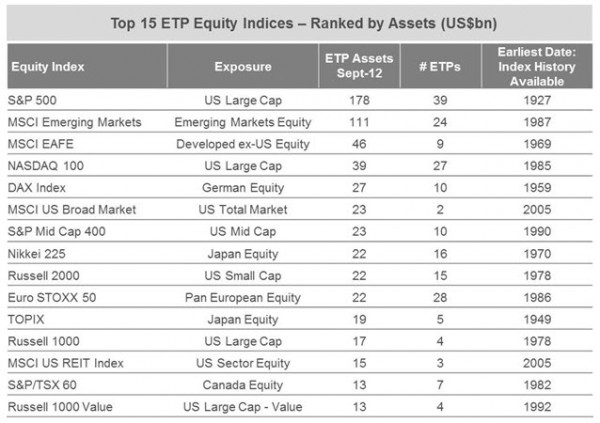In addition to analyzing exchange traded product (ETP) flows on a regular basis, my team also monitors the number of ETPs on the market at any given point – no small feat, given the fact that the number is vast and growing. As of our last count at the end of October, there were 4779 global ETPs, up from 4152 at this time last year.
The large number of ETPs available means that there are typically several products to choose from in any given asset class, which can make selecting an ETP a less than simple task. Among other criteria, we suggest that investors look at benchmark index when deciding between two similar ETPs, because differing index methodologies can cause differences in exposure, which can lead to varying risk and return profiles for the products.
So how do you evaluate a benchmark index? Here are some factors to keep in mind:
- Completeness. Does the index accurately reflect the investment opportunity?
- Investability. Does the index include securities that are liquid and available for the ETP to invest in?
- Rules. Does the index make decisions based on rules (e.g. Russell 1000) or based on the decisions of a committee (e.g. S&P 500)?
- Return data. Is accurate, complete performance data readily available?
- Turnover management. How does the index handle regular rebalancing?
- Investor acceptance. Is the index widely used?
To elaborate on this final point – investor acceptance – we thought it would be interesting to pull some data on the equity ETP indexes out there. What we found is that, while there are more than 44 equity index providers in the marketplace, the top six ETP equity index providers account for 84% of global equity ETP assets, while the top two – S&P Dow Jones and MSCI – account for 63%:
There are also many examples of indexes to which multiple ETPs are benchmarked. The ten largest indexes are utilized by an average of 18 ETPs listed across the globe, and the S&P 500 leads the pack with 39 related products. One potential reason for the popularity of these indexes is the long history of returns data that many of them offer:
We also found that index provider market share differs materially by category of exposure. Whereas S&P Dow Jones was by far the leading provider in the US equity ETP category, MSCI reigned outside of the US:
 So what can we deduce from all this? Clearly, when it comes to choosing an index to track, many investors favor certain index providers for specific exposure types. This could have something to do with the factors listed above – for example, ETP offerings would naturally gravitate toward more investable indexes and steer clear of the ones that are too difficult to replicate.
So what can we deduce from all this? Clearly, when it comes to choosing an index to track, many investors favor certain index providers for specific exposure types. This could have something to do with the factors listed above – for example, ETP offerings would naturally gravitate toward more investable indexes and steer clear of the ones that are too difficult to replicate.
Dodd Kittsley, CFA, is the Head of Global ETP Market Trends Research for BlackRock.
